THE FIVE COMPETITION WINNERS
14. Numerical Analysis of Bicycle Helmet Impacts using Biomechanical Metrics
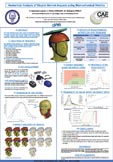
David Sepulveda-Lopez, Department of Mechanical Engineering at University Carlos III of Madrid
Jacobo Antona-Makoshi, Japan Automobile Research Institute
Marcos Rodríguez-Millan, Department of Mechanical Engineering at University Carlos III of Madrid
Abstract
This study evaluates various safety aspects of standardized impacts that cyclist may suffer while wearing a bicycle helmet, by combining a partially validated finite element model of the cranio-cervical region and a newly developed commercial bicycle helmet model.
Civil Engineering
35. Design Workflow for Additive Manufacturing
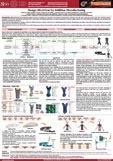
Federico Uriati, Università di Padova
Stefano Rosso, Università di Padova
Filippo Da Rin Betta, Università di Padova
Gianpaolo Savio, Università di Padova
Roberto Meneghello, Università di Padova
Gianmaria Concheri, Università di Padova
Abstract
Additive Manufacturing (AM) technologies introduce a completely new approach for the design of customized and optimized parts. Optimization approaches such as size, shape, and topology optimization are being re-discovered, since the models resulting from these methods are challenging to be produced with traditional manufacturing techniques. The aim of this work is to illustrate the possibilities of new design workflow validated on a set of test cases, adopting different design methods based on Lattice structures, PolyNurbs, and parametric CAD to reach innovative solutions.
Additive Manufacturing
38. Great statues and seismic vulnerability, a photogrammetric approach for early safeguard
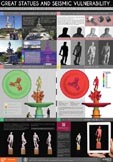
Raffaella Paolucci, University of Florence
Marco Tanganelli, University of Florence
Giorgio Verdiani, University of Florence
Abstract
In recent years, more and more attention has been paid to creating safeguards measures in protecting masterpieces, art items, large statues, from the uncontrollable event of an earthquake. In the poster presented here will be shown how it is possible to define a working method for simulating the effects of an earthquake and understand the real state of safety of these artworks.
The seismic assessment of artifacts requires a preliminary representation of the object. Only an accurate representation can provide reliable results in terms of seismic assessment. With the cooperation of the Photografic Laboratory of the University of Florence, we have made two photogrammetric surveys: one of the original copy of Oceano, placed in The National Museum of Bargello, and another one of the whole Fountain in Boboli Garden.
Aware of the importance of the initial phases of survey, representation and reconstruction for the subsequent steps, we have decided to integrate the photogrammetric survey of the Fountain with a laser scanner one, to avoid as more as possible, errors of representation and measurement, due to the high hight of the sculptural complex.
Then, starting from the model obtained with the surveying instruments, the FEM model used for structural analysis was obtained by making the initial model a series of transformations to make it suitable for an easy analysis with calculation software. At first step, the number of polygons was reduced, then it was implemented and transformed from a surface model into a volume one.
On this model were conducted analysis for proper weight, modal analysis and dynamic analysis.
Finally, at the end of this multidisciplinary survey, aimed at putting into practice the working method proper to the RESIMUS project, but trying to add something innovative to previous research, it was decided to implement the contents of the previous research, with the realization of a multimedia project, consisting of a 3D printing and the projection on it of the results obtained from the seismic analyzes conducted.
Architecture and Cultural Heritage
25. The Swiss AA-CAES pilot plant: CFD modeling and validation of the TES system
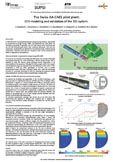
Simone Zavattoni, SUPSI - DTI - MEMTi
Jonathan Roncolato, SUPSI - DTI - MEMTi
Lukas Geissbühler, ETHZ
Andreas Haselbacher, ETHZ
Giw Zanganeh, ALACAES SA
Aldo Steinfeld, ETHZ
Maurizio C. Barbato, SUPSI
Abstract
A computational fluid dynamics approach has been developed to evaluate the performance of the thermal energy storage (TES) system, based on a packed bed of gravel, integrated into the advanced adiabatic compressed-air energy storage (AA-CAES) pilot plant built in Pollegio (CH). An extensive experimental campaign has been carried out on the pilot plant demonstrating the applicability of AA-CAES technology as promising alternative to pumped hydro. The experimental data were then exploited to evaluate the accuracy of the proposed numerical model in replicating the behavior of the real TES system.
Energy
49. A Study of a Rover Wheel for Martian Explorations, Based on a Flexible Multibody Approach
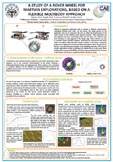
Stefano Sivo, Politecnico di Torino
Angelo Stio, Thales Alenia Space Italia
Aurelio Somà, Politecnico di Torino
Francesco Mocera, Politecnico di Torino
Abstract
Vehicles for planetary exploration have to operate in different environments, completely different from Earth For this reason, the design process of the exploration unit has an important role and can affect the requirements of the entire mission for the different space agencies involved These operations are very expensive and time consuming so that over the years, CAE methods have been developed to help engineers in the design stage These methods are used to simulate several working conditions, evaluating the manoeuvres that these robots can perform safely once their mission is started In this frame, a study was performed by Politecnico di Torino and Thales Alenia Space Italia The goal was to find the most efficient implementation of the flexibility properties of a Rover for Martian explorations wheel, considering the ExoMars Rover as case study When dealing with manoeuvres feasibility, the best compromise between the accuracy of the solution and the time required to obtain it should be found.
Mechanics
THE FINALISTS
1. Developing Multi-step Approach of Nuclear Power Plant Equipment Integrity Assessment on Example of PSV (Pressurizer Safety Valve) Structural Analysis during Accident Scenario via System Coupling Simulation (Fluid Structure Interaction Transient Analysis vs Relap5 Code)
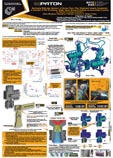
Vladimir Diemienkov, Scientific and Technical Complex “The E.O. Paton Electric Welding Institute" of the National Academy of Sciences of Ukraine
Marat Mustafin, State Enterprise State Scientific and Technical Center for Nuclear and Radiation Safety
Abstract
A multi-step approach of nuclear power plant facilities integrity assessment was presented. The coupled system (Thermal-Hydraulic & Structural) basic model of the Reactor Coolant System has been developed and assembled through an automatic data transfer application. The model was successfully validated. After the pre-simulation accident scenario, the fluid-structure interaction method was implemented for pressurizer safety valve structural analysis. The comparative analysis allows capturing significant stress zone principally caused by the dynamic evolution of thermal load.
Energy
2. FEM techniques to simulate an experimental Drop Test of an aircraft’s composite fuselage section
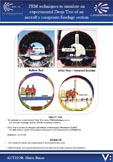
Mario Russo, Università degli Studi della Campania Luigi Vanvitelli
Abstract
The objective was to simulate an experimental Drop Test using FEM techniques on a civil aircraft’s fuselage section of 95% composite material.
The Drop Test was executed by Impact Laboratory of Aerospace Structures (LISA) of CIRA (Italian Center of Aerospace Research) commissioned by LEONARDO. The Software used for simulation was LS-DYNA.
The numerical results are comparable to the experimentla ones, so express that FEM tecniques are a great instrument to simulate complex real problems
Aerospace
3. PIXI
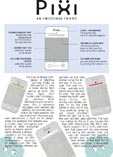
Isabella Nevoso, Università degli studi di Genova
Abstract
Pixi detects the status of the lone worker through sensors. Input are processed and checked against training set, inserted upstream of the device development process. If Pixi has in its database the configuration, for example, which includes angry face, bad language, high frequency vibrations, then illuminates its red LED and vibrates, producing sounds, as if to recall attention and alert the lone worker, to tell him that it is time to take a break and go on.
The can be without or with GUI, through AR. User can frame the Pixi logo on the device with smartphone, and view the Pixi character.
Consumer Goods
4. Design of an Adjustable Prosthetic Foot

Nicole Strain, University of Strathclyde
Emma Henderson, University of Strathclyde
Abstract
This poster details the design and analysis of an adjustable prosthetic foot. Joints of the prosthesis adjust using gas springs and can be locked in place. This allows amputees to have a variety of shoes, up to a heel height of 5 inches. SOLIDWORKS was used to design each part of the assembly and was imported onto ANSYS Workbench to perform Finite Element Analysis. Deflections and stress levels were analysed with a safety factor of 1.5. Results showed minimal deflections and stress concentrations were reduced to keep all stresses below the yield of the materials used.
Biomechanics
5. Assessment of the prediction efficiency of three simulation software concerning the conformity of compostable shoppers from a packaging industry before TÜV verification
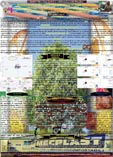
Silvana Alfei, Department of Pharmacy - University of Genoa
Silvia Catena, Department of Pharmacy - University of Genoa
Abstract
FTIR analysis is used in industry because fast, reliable, low cost. FTIR data are usually processed by Principal Component Analysis (PCA), worked up by commercial simulation software. For their simulation power, even if not included in CAE software, the prediction efficiency of JMP, MatLab and R was assessed in an eco-friendly study on the conformity of compostable shoppers (Mecplast). Despite some differences in separation efficiency, all software provided similar results, proving Mecplast items regularity and revealing an alarming presence on the market of certified but irregular shoppers.
bio-based packaging
6. Advanced performance improvement of extremely thick blade root wind turbine airfoils
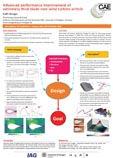
Galih Bangga, Institute of Aerodynamics and Gas Dynamics (IAG), University of Stuttgart
Abstract
Wind turbine size increases significantly nowadays to supply the clean energy demand, enforcing blade designers to utilize thick airfoils with reduced aerodynamic efficiency. Systematic studies are needed for performance improvement without sacrificing the structural constraints. Design proposals of the attempts carried out at IAG are presented. The work contains advanced airfoil design by an artificial intelligence technique and flow control for boundary layer manipulation. The investigation employs multidisciplinary solvers ranging from simple to high fidelity CFD methods by URANS and DDES.
Energy
7. A Method for the Registration of 3D Blood Vessel Models based on CT and Ultrasound Imaging
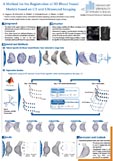
Achim Hegner, Frankfurt University of Applied Sciences
Armin Huß, Frankfurt University of Applied Sciences
Christopher Blase, Frankfurt University of Applied Sciences
Andreas Wittek , Frankfurt University of Applied Sciences
Wojciech Derwich, Goethe University Hospital Frankfurt am Main
Thomas Schmitz-Rixen, Goethe University Hospital Frankfurt am Main
Abstract
For operation indication of abdominal aortic aneurysms CT and ultrasound (US) imaging are used. To combine the advantages of both modalities, a registration of the geometries is needed. CT and US images were obtained from ten AAA patients. 3D vessel models of the aneurysmatic areas were reconstructed based on both imaging modalities. An ICP algorithm for rigid and non-rigid body registration problems was implemented in Matlab. Geometries show good agreement with a mean RMSE of 2.27 ± 0.44 mm for the rigid, as well as a mean RMSE of 1.38 ± 0.27 mm for the non-rigid registrations.
Biomechanics
8. Anisotropic Computational Description of Bony Elements: a Jaw Study
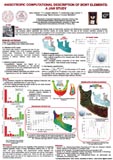
Ilaria Toniolo, Università di Padova
Claudia Salmaso, Università di Padova
Emanuele Luigi Carniel, Università di Padova
Antonio Luigi Tiberio Gracco, Università di Padova
Cesare Stefanini, Scuola Superiore Sant'Anna
Abstract
The aim of the research consists in the characterization of bone tissue mechanical behaviour starting from Computed Tomography data. The combination of CT segmentation and micromechanics provides an almost automatic procedure able to generate FEM of bony structures. The outputs consist in the distribution of the orthotropic properties and in the directions of anisotropy. The FE analyses of typical structural loading conditions lead to strain values comparable with experimentation ones. The potentialities lie in providing accurate and patient-specific biomechanical models of bony structures.
Biomechanics
9. Computational Tools for the Investigation of Biomechanics of the Lower Urinary Tract
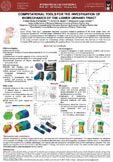
Chiara Giulia Fontanella, Università degli Studi di Padova
Arturo Natali, University of Padova
Emanuele Luigi Carniel, University of Padova
Abstract
Lower Urinary Tract (LUT) dysfunction describes symptoms related to problems of the lower urinary tract, with consequent
incontinence. Artificial Urinary Sphincters (AUS) are adopted to obtain continence conditions via urethral occlusion by applying
pressure load defined on the basis of an empirical approach. Computational Solid Mechanic (CSM) analyses are developed to evaluate
the interaction between the cuff itself and the urethral duct, with reference to the lumen occlusion process for maintaining urinary
continence. Furthermore, the methods of Fluid Structure Interaction (FSI) analyses allow contemplating the coupling of such fluid dynamics
and solid mechanics problems.
Biomechanics
10. Analysis of Bariatric Configurations after Endoscopic Surgery: Novel Approaches
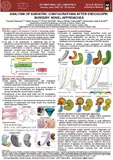
Claudia Salmaso, Università degli Studi di Padova
Ilaria Toniolo Università degli Studi di Padova
Pietro Da Roit, Centre for Mechanics of Biological Materials, University of Padova
Chiara Giulia Fontanella, Centre for Mechanics of Biological Materials and Department of Civil, Environmental and Architectural Engineering, University of Padova
Emanuele Luigi Carniel, Department of Industrial Engineering and Centre for Mechanics of Biological Materials, University of Padova
Abstract
Bariatric surgery is increasingly applied throughout the world to treat obesity and proved to be the most effective treatment in inducing weight loss. However, many risks can compromise surgery success. The goal is the development of engineering tools for the effectiveness assessment and the optimization of bariatric surgery. Computational analyses were performed considering different stomach conformations in order to compare laparoscopic and endoscopic currently used techniques. Also, numerical investigations allowed to consider new possible scenarios mimicking novel endoscopic approaches.
Biomechanics
11. Design of a mechanical device for the optimization of the burden charge in the blast furnace's hopper with the discrete element method
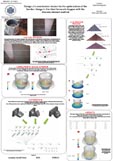
Gabriele Degrassi, University of Trieste
Lucia Parussini, University of Trieste
Abstract
The goal of this project was the design of a device that optimizes the distribution of materials inside the hopper of a blast furnace.
To reach this goal Onshape, Rocky DEM and modeFrontier were coupled together, giving back in return:
- the calibration of DEM materials related to the process;
- the simulation of the real hopper burden charge with DEM particles;
- the design of three different devices that improve the distribution inside the hopper.
siderurgy
12. Hemp FRP for Seismic Retrofitting of Existing Masonry Buildings
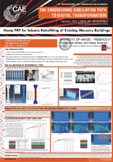
Antonio Formisano, University of Naples Federico II
Generoso Vaiano, University of Naples Federico II
Nicola J. Petrucci, University of Naples Federico II
Abstract
In the last few years the scientific community has turned its interest towards the use of natural composite materials to replace those made of carbon and glass fibres. Due to both environmental pollution for producing thermoplastic polymers and the disposal of natural fibres at the end of their life cycle, in the current work, starting from an experimental research performed at the University of Brasov in Romania on hemp fabrics laminated with thermoplastic resin, the use of composite materials with hemp fibres for seismic retrofitting of existing masonry buildings has been investigated.
Civil Engineering
13. Understanding industrial archaeology: The case of a cooling tower
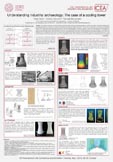
Cristina Cecchini, University of Pavia
Paolo Borin, University of Padova
Rachele Bernardello, University of Padova
Abstract
The research presents an innovative methodology for studying industrial archaeology, focusing on concrete cooling towers. The approach is aimed at the development of a knowledge frame on the buildings, integrating analog and digital tools. A workflow moves from historical research to an in-depth study of the geometries in order to understand the physical behaviours, while the introduction of digital tools (LiDAR survey, BIM models and computational analysis) allows the management of multidisciplinary information ensuring data integration and high levels of control during the whole process.
Civil Engineering
14. Numerical Analysis of Bicycle Helmet Impacts using Biomechanical Metrics

David Sepulveda-Lopez, Department of Mechanical Engineering at University Carlos III of Madrid
Jacobo Antona-Makoshi, Japan Automobile Research Institute
Marcos Rodríguez-Millan, Department of Mechanical Engineering at University Carlos III of Madrid
Abstract
This study evaluates various safety aspects of standardized impacts that cyclist may suffer while wearing a bicycle helmet, by combining a partially validated finite element model of the cranio-cervical region and a newly developed commercial bicycle helmet model.
Civil Engineering
15. Convective Industrial Textile Dryers: Analysis, Modelling, and Simulation
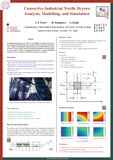
Fabiana Federica Ferro, Università degli Studi di Padova
Mirco Rampazzo, Università degli Studi di Padova
Alessandro Beghi, Università degli Studi di Padova
Abstract
Nowadays, modelling and simulation tools offer new possibilities to dominate the complexity of industrial processes, accelerating innovation cycles, rapidly exploring new solutions. In this research, we present a model of a convective industrial textile dryer, we calibrate it, and we develop a simulation environment accordingly, which could be employed to design and test advanced control strategies. The in silico tests show that the simulation tool allows us to generate synthetic data that are correctly related to the input and output cause-effect relations (for given boundary conditions).
Manufacturing and materials processing
16. Computational Fluid Dynamic model of a Gear Pump leakages by using a Dynamic Mesh
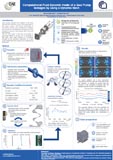
Serena Morselli, CNR - IMAMOTER
Cristian Ferrari, CNR - IMAMOTER
Abstract
Gear pumps represent the majority of the fixed displacement machines used for flow generation in fluid power systems. The internal conformation of this system contains many undetermined variables, due to both the manufacturing techniques and the breaking-in pressure, that strongly affect the pump performance.
The 3D CFD model of this type of products is particularly difficult to develop and is presented in this work, which main purpose is a sensitivity analysis on key operating parameters of a gear pump studied with both numerical and experimental techniques.
Mechanics
17. Fluid-Structure Interaction Simulations on Transcatheter Aortic Valve Implantation: Different Implantation Scenarios
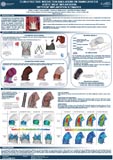
Giulia Luraghi, Politecnico di Milano
Francesco Migliavacca, Politecnico di Milano
Laura Iannetti, Beta CAE
Jose Felix Rodriguez Matas, Politecnico di Milano
Abstract
Transcatheter aortic valve implantation (TAVI) is a minimally invasive procedure that is being increasingly adopted in the treatment of valvular diseases. In fact, it constitutes a solution for patients with significant contraindications for standard surgery. The procedure consists of the insertion of a stented valve in the aortic root using a catheter. The heart valve (from biological tissue) is mounted within a stent made by a Nitinol super-elastic alloy. One of the main complications after TAVI is the presence of paravalvular leak (PVL), which is led by a malapposition of the stented valve in the aortic root.
This work focuses on a fully parametric modeling of different CoreValve Evolut R valves, which are virtually implanted in parametric stenotic patient models by means of fluid-structure interaction (FSI) simulation. The aim of this work is to compare different implantation scenarios with different device sizes and orientation by means of FSI simulations.
Biomechanics
18. CFD modelling of an accidental gas release

Gianmario Ledda, Politecnico di Torino
Alberto Moscatello, Politecnico di Torino
Anna Chiara Uggenti, Politecnico di Torino
Abstract
Risk Assessment procedure is fundamental for reporting of major hazards industrial plants, for example due to the presence of hazardous substances in pressurized components; for this reason, to evaluate the resulting damage areas without overestimation, an accurate accident modelling is necessary. We propose a new CFD approach (“Two-Steps”) to simulate a type of major accident like a highly pressurized flammable and/or toxic gas release in a congested environment, optimizing through a sensitivity analysis, the number of representative scenarios to be simulated.
Energy
19. A Model-Based Design approach for embedded system development on STM32 microcontrollers
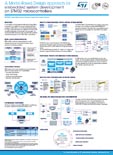
Loubna Belhamel, Dipartimento di Ingegneria Elettrica Elettronica e Informatica, University of Catania
Gaetano Rascona’, STMicroelectronics
Luigi Fortuna, Dipartimento di Ingegneria Elettrica Elettronica e Informatica, University of
Catania and CNR-IASI, Italian National Research Council - Institute for Systems Analysis and Computer Science A. Ruberti, Rome
Arturo Buscarino Dipartimento di Ingegneria Elettrica Elettronica e Informatica, University of
Catania and CNR-IASI, Italian National Research Council - Institute for Systems Analysis and Computer Science A. Ruberti, Rome
Abstract
A new software tool that supports Model Based Design (MBD) is presented. It is suitable for running Simulink® application models for STM32 MCUs. The first Simulink® blockset library for STM32 peripherals allows us to implement Processor In the Loop (PIL) configuration and automatic code generation. The secondSimulink® blockset includes extensive Math and Motor control functions based on the STM32 Motor control library.
Electronics
20. Numerical Model of a Left Atrial Appendage Occluder
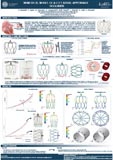
Francesca Danielli, Politecnico di Milano
Ereza Gjini , Politecnico di Milano
Alissa Zaccaria, Politecnico di Milano
Emanuele Gasparotti, Fondazione Toscana Gabriele Monasterio
Benigno Marco Fanni, Fondazione Toscana Gabriele Monasterio
Lorenza Petrini, Politecnico di Milano
Simona Celi, Fondazione Toscana Gabriele Monasterio
Giancarlo Pennati, Politecnico di Milano
Abstract
Left Atrial Appendage (LAA) is the most common site of clot formation in patients affected by Non-Valvular Atrial Fibrillation; the administration of anticoagulants may have drawbacks. LAA occluders (LAAOs) provide a valid alternative in stroke prevention. This work aims to calibrate the material and validate a numerical model of Watchman, a commercial Nitinol LAAO, based on Finite Element Analysis and experimental tests. The material was correctly calibrated and the in-silico model fitted well experimental data. Moreover, the deployment of the device in an idealised geometry was simulated.
Biomechanics
21. Advanced modelling and Digital manufacturing: Parametric Environmental Design Tools for the Optimization of UHPFRC Shading Panels
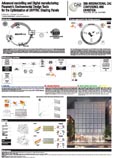
Giovanni Nocerino, University of Naples Federico II
Abstract
The "Industry 4.0" production scenarios are determining a paradigm shift in the design of building components. Digital tools are pushing the investigation of components manufacturing process into a virtual dimension in which the integration between environmental and material/geometric parameters identifies the meta-design phase as the "ideal place" to experiment the creative use of data and technical knowledge. Starting from these assumptions, the paper illustrates an original design methodology and the related parametric workflow aimed at optimizing façade shading systems realized in UHPFRC
Architecture technology
22. Numerical Study of Eod Helmet Under Blast Loadings
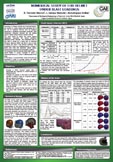
Borja Valverde-Marcos, Universidad Carlos III de Madrid (UC3M)
Marcos Rodríguez-Millán, Universidad Carlos III de Madrid (UC3M
J. Antona-Makoshi, Japan Automobile Research Institute (JARI)
Abstract
Nowadays, in military conflicts and in terrorist attacks, the number of victims injured and deceased due to the use of explosive devices such as weapons represents a significant percentage worldwide.
The need arises to protect the trained personnel attempting bomb disposal. The equipment used by this staff is the bomb suit or Explosive Ordnance Disposal (EOD) suit, that is used in order to reduce the injury if the devices explode.
In this study, a numerical finite model of EOD helmet was developed in order to evaluate helmet use limits, using a validated head finite element model.
Military
23. Evaluation of Different Thermal Sources' Temperature Distribution and Analysis of Residual Stress in Welded Joint
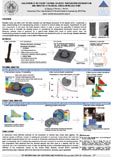
Andrea Chiocca, University of Pisa
Francesco Frendo, University of Pisa
Leonardo Bertini, University of Pisa
Abstract
Residual stress can affect both the static strength and the fatigue endurance of the welded joints. In particular, a deep understanding of the manufacturing process is needed to achieve safety and quality requirements for parts and components. In this work, the finite element method is used to assess the capability of different thermal methods used to simulate the welding process in reproducing the temperature distribution around the weld. Moreover, residual stress is evaluated for a pipe-to-plate welded joint made of S355JR carbon steel. The manufacturing process is studied from both the thermal and mechanical point of view through thermal-structural uncoupled finite element analysis made by ANSYS® Mechanical.
Mechanics
24. Global Optimization, Infinity Computer and Applications
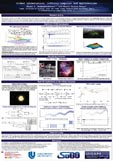
Marat Mukhametzhanov, University of Calabria
Maria Chiara Nasso, University of Calabria
Abstract
The research consists of two fields: global optimization with expensive and noisy objective functions, and the Infinity Computer – a supercomputer allowing one to work numerically with finite, infinite and infinitesimal numbers in the same way. A particular attention is dedicated to solving real-life problems including the following important industrial applications: solution to expensive and ill-conditioned optimization problems in image processing and noisy data fitting; stable and precise solution to ODEs; exact higher order numerical differentiation, etc.
Information and Communication Technologies
25. The Swiss AA-CAES pilot plant: CFD modeling and validation of the TES system

Simone Zavattoni, SUPSI - DTI - MEMTi
Jonathan Roncolato, SUPSI - DTI - MEMTi
Lukas Geissbühler, ETHZ
Andreas Haselbacher, ETHZ
Giw Zanganeh, ALACAES SA
Aldo Steinfeld, ETHZ
Maurizio C. Barbato, SUPSI
Abstract
A computational fluid dynamics approach has been developed to evaluate the performance of the thermal energy storage (TES) system, based on a packed bed of gravel, integrated into the advanced adiabatic compressed-air energy storage (AA-CAES) pilot plant built in Pollegio (CH). An extensive experimental campaign has been carried out on the pilot plant demonstrating the applicability of AA-CAES technology as promising alternative to pumped hydro. The experimental data were then exploited to evaluate the accuracy of the proposed numerical model in replicating the behavior of the real TES system.
Energy
26. Numerical modelling of dynamic compression tests on multi-layer Origami plates
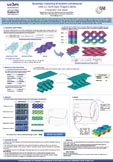
Josue Aranda-Ruiz, University Carlos III of Madrid
Marta Maria Moure, University Carlos III of Madrid
Abstract
In this work, the dynamic response of multi-layered Origami plates subjected to uniaxial compression tests has been numerically analyzed. The plates are based in the Miura-Ori single cell, which is defined through four independent geometrical parameters: two side lengths a and b, sector angle Φ and folding angle θ. Four-layer specimens have been considered, and two different configurations: homogeneous or graded stiffness structures. Experimental results, involving quasi-static compression tests published in the scientific literature, have been used in order to validate the developed numerical model. The results show the influence of compression velocity: the slope of the densification area is higher as the compression velocity increases and the apparition of waves due to dynamic effects is more pronounced for higher velocities.
Mechanics
27. From a Real Hand to a Digital Hand: A Transformation for Impact Testing Simulation
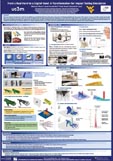
Marta María Moure Cuadrado, Univesity Carlos III of Madrid
Josué Aranda Ruiz, University Carlos III of Madrid
Faisal Alessa, West Virginia University
Eduardo M. Sosa, West Virginia University
Abstract
This work presents the development of a Finite Element Digital Human Hand Model (FE-DHHM) created with several Computer Aided Engineering (CAE) tools. The purpose of the research is to create a simulation model to reproduce the impact of a small-sized and low-mass object on the dorsum of a flattened hand. The digital model includes the complete bone structure, derived from high-resolution laser scanning of human hand bones, and surrounded by soft tissue with material properties representative of a real hand. The simulations include impacts on the fingers, knuckles, and metacarpal region. The impact reaction forces are computed and compared to controlled impact tests performed on synthetic and cadaveric hands. The ultimate objective is to develop a calibrated model that can be used to assess the level of protection offered by metacarpal gloves typically used in different industries.
Biomechanics
28. High-accuracy CNC algorithms for high-precision manufacturing

Luis Rubio, Savaria Institute of Technology, ELTE University
László Kollár , Savaria Institute of Technology, ELTE University
Abstract
The tendency to product and, subsequently, machine miniaturization is leading to an increasing demand on high precision machining. This work deals with computer numerical controllers (CNC) for high precision machining; control of linear motors when machining end parts, adaptive control of forces, vibration avoidance, and an intelligent system for managing the selection of machine-tools, and working parameters are pointed out in an intuitive, and efficient way.
Manufacturing
29. Biomass Gasification: Syngas Conversion and TAR Condensation

Nicola Casari, University of Ferrara
Michele Pinelli, University of Ferrara
Alessio Suman, University of Ferrara
Mirko Morini, University of Parma
Antonio Candido, University of Parma
Abstract
The poject is conceived to form the basic know-how for the spreading of the biomass co-generation technology. The aim is the formation of a real-scale permanent lab able to bridging the gap between research and industrial application of the biomass gasification technology.
Here is reported the numerical modeling of the process, regarded as a tool able to identify the influence of different parameters on the operation of the gasifier. The analyses presented is divided in two steps: Syngas Formation and Tar Condensation analysis.
Energy
30. Investigation of Ice-Cream processing machines: a numerical approach

Nicola Casari, University of Ferrara
Michele Pinelli, University of Ferrara
Alessio Suman, University of Ferrara
Abstract
Ice-Cream processing is a complex series of operations that are typically driven by experience or by trial and error procedures. The complexity of the procedure is related to the nature of the product that has to be handled (mixture of liquid and air), that must undergo thermal cycles that determine phase changes.
This study is devoted to model the behavior of the fluid in the machinery that are typically used for the preparation of the ice-cream. The investigation has been carried out numerically, and a complete open source toolchain has been used for the analysis.
Food
31. A new platform to infer runaway electrons in fusion plasma phenomena
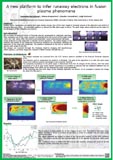
Concetta Barcellona, University of Catania (Unict)
Abstract
Nuclear fusion represents a promising and clean energy source. One of the main target in Tokamak plasma is the detection and control of Runaway Electrons (REs). An automatic platform to extract the REs pitch angle is shown. The pitch angle values inferred are the basis for the strategies of REs mitigation and control.
Energy
32. Innovative methods of design simulation for urban resilience in climate change
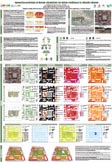
Maria Vittoria Arnetoli, DIDA Architecture Department, Florence University
Roberto Bologna, DIDA Architecture Department, Florence University
Giulia Guerri, DIDA Architecture Department, Florence University
Giulio Hasanaj, DIDA Architecture Department, Florence University
Abstract
Adapting cities to the impacts of climate change is becoming a central issue of the Architectural Technology. This challenge is faced by the research project exposed, carried out by the DIDA Architecture Department of Florence with the aim to investigate methodologies and tools for implementing urban resilience. The case study has used the Envi-met software as a support to simulate the effectivness of innovative technological solutions of Adaptive Design on open public space, facing the socio-climatic vulnerabilities related in particular to the Urban Heat Island phenomenon.
Architecture
33. A Novel Glassy Carbon Window Design for Experiments Using Synchrotron Light
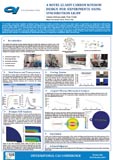
Arman Mohsenzadeh, Elettra Sincrotrone Trieste
Ivan Cudin, Elettra Sincrotrone Trieste
Abstract
The SYRMEP (Synchrotron Radiation for Medical Physics) beamline at Elettra synchrotron is provided for a large number of experiments and researches in different fields including medical diagnostic radiology, life science and material science applications such as geology, volcanology, cultural heritage and agrifood technology. In this beamline there is a double-crystal Si (111) monochromator which selects energies in the range between 8 keV and 35 keV. At the end of its vacuum chamber there is a Kapton window through which the X-ray passes. Due to the energy of X-ray the Kapton window lasts for few weeks and it has to be replaced regularly which results in shutdowns and delays in important experiments and consequently extra costs. The idea of the present work is to design an alternative window of Glassy carbon which is supposed to increase the efficiency of the beamline. It is noteworthy that utilizing FEM software as a powerful tool considerably affects time and costs.
Mechanics
34. Numerical simulation for glass containers forming process

Carlo Cravero DIME, University of Genoa
Davide Marsano DIME, University of Genoa
Maurizio Agoglio, Vetreria Etrusca
Giorgio Leandro, Vetreria Etrusca
Abstract
The industrial production of a glass container is a very complex process. This process consists of a first forming step and a subsequently finishing step. The high quality of the final product represents the main target of a glass industry; in particular the glass thickness of the container is one of the most important quality parameters. In order to respect these parameters, the empirical knowledge of the operators is often used exclusively, due to the lack of scientific studies. The objective of this research is the development of a numerical model for the forming process of a glass container, based on CFD techniques through the use of the commercial software Ansys CFX. This model is particularly complex due to the presence of a two-phases flow (glass-air) with an high viscosity (strongly variable with temperature). This model focuses on the container forming phase, which clearly influences the entire process. This model is able to represent the flow of molten glass and the heat exchange during the process (thanks to the conjugate heat transfer); moreover it determines the temperature field and the profile of the container thickness. In this way, the influence on the container thickness can be preliminarily checked by varying the main parameters (i.e. the glass inlet temperature, the timing of the process, the blowing pressure and the material of the mold). As example, the model has been applied to analyze the influence of the latter parameter. This research activity will continue with the simulation of the entire process, including the finishing step.
Glass industry
35. Design Workflow for Additive Manufacturing

Federico Uriati, Università di Padova
Stefano Rosso, Università di Padova
Filippo Da Rin Betta, Università di Padova
Gianpaolo Savio, Università di Padova
Roberto Meneghello, Università di Padova
Gianmaria Concheri, Università di Padova
Abstract
Additive Manufacturing (AM) technologies introduce a completely new approach for the design of customized and optimized parts. Optimization approaches such as size, shape, and topology optimization are being re-discovered, since the models resulting from these methods are challenging to be produced with traditional manufacturing techniques. The aim of this work is to illustrate the possibilities of new design workflow validated on a set of test cases, adopting different design methods based on Lattice structures, PolyNurbs, and parametric CAD to reach innovative solutions.
Additive Manufacturing
36. Influence of parameters variations on AlSi10Mg samples manufactured by SLM technology
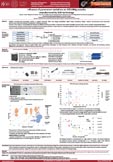
Federico Uriati, Università di Padova
Filippo Da Rin Betta, Università di Padova
Paolo Ferro, Università di Padova
Stefano Rosso, Università di Padova
Gianpaolo Savio, Università di Padova
Gianmaria Concheri, Università di Padova
Filippo Berto, NTNU Norwegian University of Science and Technology
Roberto Meneghello, Università di Padova
Abstract
Additive manufacturing technology, applied to metallic materials, offers new design possibilities: higher shape complexity, deeper material microstructure and mechanical performances control are allowed, compared to traditional processes. The aim of the project is to investigate the influence of different printing parameters in selective laser melted AlSi10Mg aluminium alloy and to correlate Energy Density (Ed) to microstructure, porosity, Ultimate Tensile Strength (UTS) and fatigue resistance.
Additive Manufacturing
37. Integration of CFD Analysis in Product Development Process of Kitchen Range Hoods

Alessandro Florio, Università Degli Studi di Napoli Federico II
Marilena Musto, Università Degli Studi di Napoli Federico II
Orlando Leo, Elica
Abstract
The aim of this work is the integration of CFD in a business reality, carrying out a CFD model to add a new phase to the product development process of kitchen range hoods. In fact, a CFD phase would allow the study of “virtual prototypes” instead of actually realizing prototypes to test in laboratory, with obvious benefits in term of cost, time and resources saving. In order to create this complete CFD model, all those components that influence the fluid dynamic parameters of the hood were identified and then integrated through an O.V.A.T. procedure (One Variable At Time).
Appliances
38. Great statues and seismic vulnerability, a photogrammetric approach for early safeguard

Raffaella Paolucci, University of Florence
Marco Tanganelli, University of Florence
Giorgio Verdiani, University of Florence
Abstract
In recent years, more and more attention has been paid to creating safeguards measures in protecting masterpieces, art items, large statues, from the uncontrollable event of an earthquake. In the poster presented here will be shown how it is possible to define a working method for simulating the effects of an earthquake and understand the real state of safety of these artworks.
The seismic assessment of artifacts requires a preliminary representation of the object. Only an accurate representation can provide reliable results in terms of seismic assessment. With the cooperation of the Photografic Laboratory of the University of Florence, we have made two photogrammetric surveys: one of the original copy of Oceano, placed in The National Museum of Bargello, and another one of the whole Fountain in Boboli Garden.
Aware of the importance of the initial phases of survey, representation and reconstruction for the subsequent steps, we have decided to integrate the photogrammetric survey of the Fountain with a laser scanner one, to avoid as more as possible, errors of representation and measurement, due to the high hight of the sculptural complex.
Then, starting from the model obtained with the surveying instruments, the FEM model used for structural analysis was obtained by making the initial model a series of transformations to make it suitable for an easy analysis with calculation software. At first step, the number of polygons was reduced, then it was implemented and transformed from a surface model into a volume one.
On this model were conducted analysis for proper weight, modal analysis and dynamic analysis.
Finally, at the end of this multidisciplinary survey, aimed at putting into practice the working method proper to the RESIMUS project, but trying to add something innovative to previous research, it was decided to implement the contents of the previous research, with the realization of a multimedia project, consisting of a 3D printing and the projection on it of the results obtained from the seismic analyzes conducted.
Architecture and Cultural Heritage
39. A discussion about finite element modeling of SLM produced stents
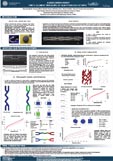
Alessandro Muzio, Politecnico di Milano
Francesca Berti, LaBS, Chemistry, Materials and Chemical Engineering Department, Politecnico di Milano
Valentina Finazzi, Department of Mechanical Engineering, Politecnico di Milano
Abstract
This work analyses the feasibility of a Finite Element model of cardiovascular stents produced by Selective Laser Melting (SLM) technique, identifying general guidelines for numerical simulations on these devices. Given the high geometrical variability of SLM parts at the microscale, microtomography scans allowed to build a stent model through beam element discretization. Preliminary studies were conducted to compare traditional hexahedral mesh with beam mesh, and finally the SLM stent geometry was numerically investigated.
Biomechanics
40. Numerical modelling of aramid composite combat helmet under impact threat
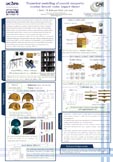
Ignacio Rubio Diaz, Universidad Carlos III de Madrid
Marcos Rodriguez Millan, Universidad Carlos III de Madrid
Abstract
Aramid composites have become increasingly important in defence due to their high stiffness, lightweight and high energy absorption capacity. The use of personal protections has been increased because of the recent rise terrorism, civil and international conflicts since it enables to minimise the morbidity and mortality resulting from ballistic head injuries. Continuum efforts are being dedicated made to reduce further the helmet weight without diminishing ballistic resistance. The design of helmets to achieve strictest requirements combining impact resistance and reasonable weight is currently one of the primary concerns of military and security industry. The development of an excellent quality combat helmet involves an expensive and long-time experimental campaign. For this reasons FEM has an important role in protection development. The principal goal of this work is develop a realistic and validated model of combat helmet to use like a optimize tool for manufacturers. As main contribution, a multilayer model that contains more than twenty layers that combat helmet are composed is presented. This particularity allowed calculating the damage extension and back-face deformation, validated with computed tomography (CT) scan.
Civil Engineering
41. A container terminal modelling based on micorscopic multi-agent discrete event simulation
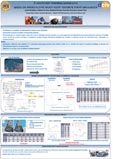
Lucas Cisternas, University of Salerno
Stefano De Luca, University of Salerno
Roberta Di Pace, University of Salerno
Agostino Di Luggo, University of Salerno
Chiara Fiori, University of Salerno
Abstract
This research presents the specification, calibration and validation of a container terminal model based on discrete events multi-agent simulation. The proposed framework is able to support strategies aiming to effective (with respect to some performance indices) and efficient (in terms of air pollution) management of the terminal.
Furthermore, this DSS tool may be adopted also for the analysis of the impact of some endogenous variables, for instance, fatigue due to the workload on quay crane operators. The developed framework has been applied to a real case study of the Salerno terminal container.
Rail and Transport
42. Integrating Tools for Urban traffic control with CAV
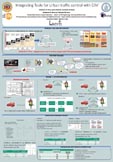
Facundo Storani, University of Salerno
Stefano De Luca, University of Salerno
Roberta Di Pace, University of Salerno
Luigi Pariota, University of Naples Federico II
Gennaro Bifulco, University of Naples Federico II
Abstract
The main focus of the research is the development of an integrated framework combining different tools. The main components of the framework are
- VI-CarRealTime which is a comprehensive environment used for modeling and simulating vehicles in real-time;
- Matlab- SIMULINK, suitable for the development of complementary parts;
- SUMO which is a microscopic simulator, open, simple, widely used in research; in particular the Traci4Matlab package has been used.
The framework has been adopted for the implementation of some warm-up experiments aiming to study the combination between driver guidance and signal control in presence of Connected Autonomous Vehicles.
Rail and Transport
43. Construction Vessel Virtual Factory: concept of Decision Support System for offshore pipelay project optimization
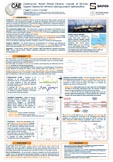
Pietro Maggia, Politecnico di Milano
Davide Rossin, Saipem
Alessandro Smareglia, Saipem
Abstract
During the last few decades, the worldwide industrial context has experienced radical changes due to technological, environmental, economic and political reasons, leading to the introduction of new manufacturing paradigms to handle the ever greater complexity of the production systems. In particular, the EPC business in the Oil&Gas industry suffered from a substantial reduction of the markup and faced a gradual increase of the complexity, shifting the attention towards new methods to guarantee the efficiency and the effectiveness of the projects.
This work focuses on the development of a prototype tool, capable of supporting the selection of the best setup of a system dedicated to offshore pipelaying. An integrated simulation model is built following the Virtual Factory concept guidelines to replicate the behavior of the selected system, which can be considered as a Reconfigurable Manufacturing System, due to its modular structure. The model must take into account the complex nature of the marine environment, strongly affecting the project outcome.
Quantitative insights on the performance of Saipem’s leading pipelay vessel, the Castorone, are supplied to the decision maker through the evaluation of alternative design and operative choices, regarding both the assembly system and the supporting logistics fleet. A simulation framework has been developed to correctly perform the comparison between the configurations selected by the decision maker, considering the endogenous and exogenous variability resulting from the assembly process and the meteo-marine conditions respectively.
The tool has been applied to support the selection of the best logistics configuration. Multiple settings were analyzed and a choice suggested, based on the robustness of the observed metrics. The prototype demonstrated that a single model is capable of replicating the system dynamics on multiple detail levels and using the obtained data to suggest adequate choices to the decision maker.
Oil and Gas
44. A novel FSI-RBF mesh morphing environment to design a new polymeric aortic valve
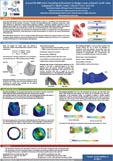
Emanuele Gasparotti, Fondazione Toscana Gabriele Monasterio
Emanuele Vignali, Fondazione Toscana Gabriele Monasterio
Ubaldo Cella, University of Rome Tor Vergata
Leonardo Geronzi, University of Pisa
Emiliano Costa, RINA Consulting
Simona Celi, Fondazione Toscana Gabriele Monasterio
Abstract
Heart valve diseases are among the leading causes of cardiac failure around the globe.
Current advances in imaging technology, in numerical simulation. A CAD model of an aortic valve prosthesis was designed on the basis of elliptic-hyperboloid formulation. The resulting CAD model was used to perform numerical in-silico simulation. Simulations were performed through a novel hybrid approach based on RBF mesh morphing technique and CFD simulations. The novel simulation strategies have revealed to be a promising approach to test both structural and functional device performances.
Biomechanics
45. A novel FSI approach for the study of the aorta hemodynamics: an integrated imaged based and RBF mesh morphing technique
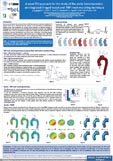
Katia Capellini, Fondazione Toscana Gabriele Monasterio
Simona Celi, Fondazione Toscana Gabriele Monasterio
Ubaldo Cella, Department of Enterprise Engineering, University of Rome Tor Vergata
Emanuele Gasparotti, Fondazione Toscana Gabriele Monasterio
Emanuele Vignali, Fondazione Toscana Gabriele Monasterio
Benigno Marco Fanni, Fondazione Toscana Gabriele Monasterio
Emiliano Costa, RINA Consulting
Abstract
Simulations of hemodynamics blood flow require fluid-structure interaction approach; however, these types of simulations require the definition of additional structural information such as material behaviour, wall thickness and their spatial variations, that are not easy to be defined in-vivo. In this study we propose a couple approach based on CFD simulations and RBF mesh morphing technique. Our method is able to introduce the deformed wall in a transient CFD simulation starting from gated medical images. The proposed strategy is presented for the study of a thoracic aorta hemodynamics.
Biomechanics
46. In silico evaluation of a patient specific ATAA case through experimental mechano microstructural characterization
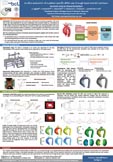
Emanuele Vignali, BioCardioLab, Fondazione CNR-Regione Toscana G. Monasterio
Francesco Di Bartolo, Department of Information Engineering, University of Pisa
Emanuele Gasparotti , BioCardioLab, Fondazione CNR-Regione Toscana G. Monasterio - Department of Information Engineering, University of Pisa
Antonio Malacarne, TeCIP Institute, Scuola Superiore Sant’Anna
Vincenzo Positano, BioCardioLab, Fondazione CNR-Regione Toscana G. Monasterio
Luigi Landini, Department of Information Engineering, University of Pisa
Simona Celi, BioCardioLab, Fondazione CNR-Regione Toscana G. Monasterio
Abstract
Given the fact that in ascending thoracic aortic aneurysms (ATAA) tissues present a strong link between microstructure and mechanical components, a complete analysis of ATAA must include both aspects for the definition of a constitutive model which is hyperelastic and anisotropic. A new system for the characterization of ATAA tissue through the simultaneous microstructural and biaxial mechanical evaluation is developed. The data are then fitted through a fiber based model which was then implemented in the ANSYS environment for the Fluid Structure Interaction of a patient specific ATAA case.
Biomechanics
47. An integrated CFD and UQ approach to assess hemodynamic alteration in the Aortic Coarctation
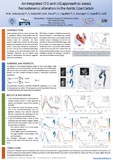
Maria Nicole Antonuccio, University of Pisa
Alessandro Mariotti, DICI, University of Pisa
B.M. Fanni, BioCardioLab – Fondazione Toscana G. Monasterio
K. Capellini, BioCardioLab – Fondazione Toscana G. Monasterio
E. Sauvage, Great Ormond Street Hospital, UCL
C. Capelli, Great Ormond Street Hospital, UC
S. Celi, BioCardioLab – Fondazione Toscana G. Monasterio
Abstract
A patient-specific Computational Fluid Dynamics (CFD) framework was developed for the non-invasive assessment of the hemodynamics of the aortic coarctation, starting from the patient-specific imaging to the related computational model and the appropriate boundary conditions. In particular, this study aims to present a novel non-invasive study of a CoA case before and after the intervention, integrating 3D MRI and uncertainty quantification techniques in CFD environments.
Biomechanics
48. A novel image-based formulation for enhanced patient-specific in silico simulations of cardiovascular interventions
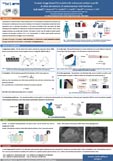
Benigno Marco Fanni, Fondazione Toscana Gabriele Monasterio
Emanuele Gasparotti Fondazione Toscana Gabriele Monasterio
Katia Capellini, BioCardioLab, Bioengineering Unit, Fondazione Toscana Gabriele Monasterio and Department of Information Engineering, University of Pisa
Claudio Capelli, UCL Institute of Cardiovascular Science, University College of London
Emanuele Vignali, BioCardioLab, Bioengineering Unit, Fondazione Toscana Gabriele Monasterio and Department of Information Engineering, University of Pisa
Vincenzo Positano, BioCardioLab, Bioengineering Unit, Fondazione Toscana Gabriele Monasterio
Simona Celi, BioCardioLab, Bioengineering Unit, Fondazione Toscana Gabriele Monasterio
Abstract
Purpose – Computational models of cardiovascular structures rely on their accurate mechanical characterization. A validated method able to infer the material properties of patient-specific large vessels is currently lacking. The aim of the present study is to present a technique based on the flow-area (QA) method to retrieve basic material properties from magnetic resonance imaging (MRI).
Methods – The proposed method was tested, first, in silico and then in vitro. Finally, an in vivo patient-specific case was performed. In silico, fluid-structure interaction simulations of flow within a deformable pipe were run with varying elastic modules (E). The proposed QA-based formulation was applied on the FSI results to retrieve E values. In vitro, deformable phantoms connected to a mock loop circuit were tested within MR scanning. Images were elaborated according to the proposed formulation to infer E of the phantom. In vivo, a retrospective patient enrolled for percutaneous pulmonary valve implantation was considered. Numerical simulation of the intervention was run with the E value inferred from MRI.
Results – Results were verified against standard tensile tests. In silico results showed a good agreement between estimated and assigned E values, with an average error of 7.8±4.1% (n = 12). In vitro, the difference between inferred and directly assessed E was 2.0%. In vivo, an excellent matching between post-operative imaging and simulation was found.
Conclusion – This study presented promising results of an indirect and non-invasive method to establish elastic properties from solely MRI data, suggesting a potential in vivo mechanical characterization of large blood vessels.
Biomechanics
49. A Study of a Rover Wheel for Martian Explorations, Based on a Flexible Multibody Approach

Stefano Sivo, Politecnico di Torino
Angelo Stio, Thales Alenia Space Italia
Aurelio Somà, Politecnico di Torino
Francesco Mocera, Politecnico di Torino
Abstract
Vehicles for planetary exploration have to operate in different environments, completely different from Earth For this reason, the design process of the exploration unit has an important role and can affect the requirements of the entire mission for the different space agencies involved These operations are very expensive and time consuming so that over the years, CAE methods have been developed to help engineers in the design stage These methods are used to simulate several working conditions, evaluating the manoeuvres that these robots can perform safely once their mission is started In this frame, a study was performed by Politecnico di Torino and Thales Alenia Space Italia The goal was to find the most efficient implementation of the flexibility properties of a Rover for Martian explorations wheel, considering the ExoMars Rover as case study When dealing with manoeuvres feasibility, the best compromise between the accuracy of the solution and the time required to obtain it should be found.
Mechanics







